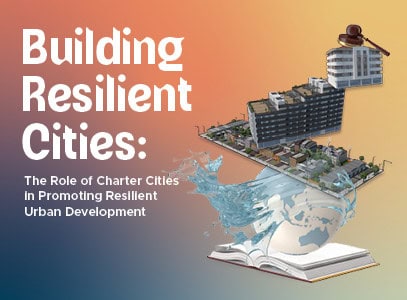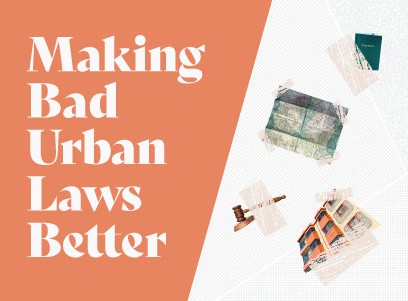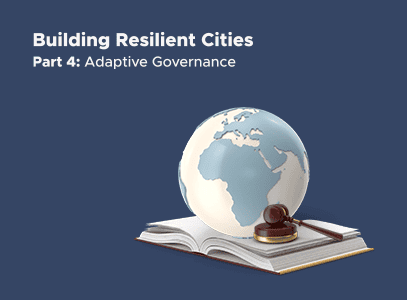After appearing to have conquered the coronavirus at home, China is using the global political and economic disruption of the coronavirus pandemic to aggressively advance long term geo-political interests. China has cracked down on the pro-democracy movement in Hong Kong and has made bold moves in the South China Sea. This forceful posture can also be found far from China’s own back yard, including in Africa. In exchange for debt relief, China is seeking control of Zambia’s third largest copper mine.
The recent Chinese aggression can be interpreted as part of their larger goal to reshape the global order. The Belt and Road Initiative (BRI) is the cornerstone of their project. China is investing in infrastructure across the globe, building ports, rail systems, airports, special economic zones, and even some new cities. Estimates of the magnitude of investment vary from $1 trillion to $8 trillion. In exchange for infrastructure investment, Chinese firms have secured easy access to natural resources and are creating new markets for their finished goods.
One of the most notable BRI projects is a new Eurasian “land bridge,” a railroad system running from Western China to Western Russia that includes infrastructure like the Khorgos dry port in Kazakhstan. BRI initiatives extend to South Asia as well. Sixty-two billion dollars has been invested in infrastructure as a part of the China-Pakistan Economic Corridor, ultimately an effort to improve Chinese access to the Gwadar Port. In Africa, China has built high speed rail linking Mombasa to Nairobi, a new port in Djibouti, and is playing a key role in the construction Egypt’s new administrative capital, to name just three projects.
While BRI projects are commercial and China expects the loans to be repaid, they serve a political purpose too. If anything, the political goals of BRI projects have subsumed the commercial goals. BRI is, and must be understood as, a political project. It is a state-led effort to create transportation infrastructure which gives China access to natural resources to import and markets to export to.
BRI is critical for China in part because China is a net food and energy importer. China’s ability to import what it needs is currently dependent on a global maritime order enforced by the U.S. Navy. BRI should be understood as a mechanism to build supply chains that reduce China’s dependence on benevolent American hegemony.
This is not to say the commercial element of BRI is unimportant. Though governments, including China’s, face fewer budget constraints than the private sector, those constraints still exist. Even before the coronavirus, BRI investment had been falling. China, for example, refused loans that would have extended the Kenyan high speed rail network to Uganda. Most BRI investments assume Chinese-level growth rates, which have rarely been met.
*****
The coronavirus has challenged the current global political order. The failure of America and Europe to effectively contain the spread of the pandemic has left them distracted. China is taking this opportunity to pursue their new order. Increased Chinese influence around the global will introduce a number of negative consequences, including reduced freedom of speech and diminished concern for human rights. While it is too early to see how persistent these changes will be, it is time for America to start thinking about the impact of BRI on the global order and how to effectively respond.
America has already launched two responses to BRI, the Development Finance Corporation (DFC) and the Blue Dot Network. The DFC is a rebranded Overseas Private Investment Corporation with a bigger budget. The Blue Dot Network is a certification process for infrastructure projects. While a Google search of “Belt and Road” immediately returns pages of relevant results, the same cannot be said for “Blue Dot”.
These responses, while a start, are insufficient. China is succeeding in part because it is able to tell a coherent story about economic development. Since 1980, China has lifted around 850 million people out of poverty. Shenzhen transformed a number of small fishing villages into a world class city within two generations. While people in emerging markets want freedom of speech and human rights, they also want jobs.
China’s model of authoritarian state capitalism believes human rights and economic development are mutually exclusive. America has done little to prove them wrong. The stories of economic and social progress made during America’s age of industrialization in the 19th and early 20th centuries are forgotten. America’s post-war global engagement has decreased the amount of large conflicts between regional powers, but aside from a handful of East Asian success stories, poverty has remained entrenched. Some African countries have seen almost no economic growth, decades after independence.
If Chinese investment can accelerate growth rates, they’ll win friends throughout the world. As the relatively weak outcry from the Muslim world about the Uighur mistreatment demonstrates, investment and geopolitical concerns often trump human rights.
To counter China’s increasing presence on the world stage, America needs a positive vision of development. We must demonstrate that liberalism, the philosophy that spawned the American experiment, is still relevant. America needs a proof of concept, something to illustrate how open markets and freedom are still the most powerful forces for human flourishing.
In short, America needs to help develop charter cities. Charter cities were originally proposed in a 2009 TED talk by recent Nobel Laureate Paul Romer. He argued that a low-income host country could invite a high income-country to administer a new city. With good liberal institutions in place for the charter city, it would attract investment and create jobs, stimulate economic investment, and show the host country the importance of reform.
While Romer was unsuccessful in his quest to build charter cities, the idea has continued to evolve. Instead of inviting a guarantor country to administer a new city, which introduces difficult political challenges given the history of colonialism, it’s possible to create a public-private partnership between a host country and city developer, devolving governing authority to a new, independent administration. This approach is both politically feasible and sufficiently comprehensive to lay the groundwork for long term economic success.
Charter cities are a tool for economic development. They combine the governance reforms necessary to attract foreign investment, encourage job creation, and generate economic growth with the infrastructure that is needed to support growth over the long run. Charter cities can also help demonstrate that civil liberties and economic development are not mutually exclusive, but in fact mutually reinforcing necessary components of a flourishing society.
*****
Two of the most pressing problems today are global poverty and rapid urbanization. There are over 70 million new urban residents annually, but they aren’t moving to superstar cities like New York or London. Instead, they’re concentrated in the Global South in cities like Lagos and Kinshasa. Over 90 percent of today’s urbanization is occurring in Africa and Asia.
Throughout human history, urbanization has taken place only after a base level of transport infrastructure had been built and after large increases in agricultural productivity created labor and food surpluses that could support a growing urban population. Countries that have urbanized with production-based economies tend to see a higher quality of life—fewer slums and lower poverty rates—than those whose economies are based more on resources and non-tradeable services.
By moving to cities and taking advantage of the larger labor market, people become more productive and lift themselves out of poverty. Unfortunately, this trend is breaking down in some regions. Urbanization in the Global South is occurring at significantly lower levels of income, productivity, and infrastructure development than was the case when now-developed nations urbanized in the 18th, 19th, and 20th centuries. In much of sub-Saharan Africa, there is urbanization without industrialization.
Urbanization without industrialization has potentially disastrous consequences. No country, aside from a handful of oil abundant ones, has developed without industrialization. A large urban population without good jobs means poverty. There is the immediate loss of human welfare for people living in slums, with no hope of improving their productivity or ensuring their children have better lives. Second order consequences include political unrest, both in the host country as well as abroad. Migration has been a top political concern in both Europe and the U.S. for the better part of a decade, spurring rising nationalist movements.
Solving this challenge requires a new approach to urbanization and a new path for American global engagement. Current development strategies have had their successes. Life expectancy and other health indicators have hugely improved in emerging markets over the last few decades. Malaria nets have saved millions of lives. However, the current successes have not led to sustained economic growth. 40 years ago, Shenzhen was a collection of fishing villages. Now it is a gleaming metropolis. That is development.
Contrast Shenzhen with a village that had received the benefits of the best interventions as developed through randomized control trials. There would be no malaria, no intestinal worms, and everyone would receive cash grants. The people would undoubtedly be better off. They would be healthier and have higher incomes. However, the village would look substantially the same. Houses might be slightly nicer, but there would be no indoor plumbing. The roads would remain unpaved. While lives would improve, the village would not “develop” in a transformative way.
To compete with the attractive lure of Chinese investment, America needs to offer a credible development alternative. That’s where charter cities can help. Combining good governance with infrastructure can set the stage for development. Charter cities are small enough to allow for reforms that would otherwise not be possible at the national level, but large enough to for the economies of scale necessary to generates sustained economic growth. Imagine a Shenzhen in Africa, not just creating opportunities for residents, but helping to spur reforms throughout the continent.
*****
Charter cities have two important components, governance and physical infrastructure. New planned cities are already being built to accommodate the rapidly rising urban population. Journalist Wade Shepard estimates that there are over 200 currently under construction. Most of these master planned cities are focused on infrastructure but introducing governance reforms to these projects is achievable as well as essential.
One of these new cities is Nkwashi, a 12 square kilometer development outside of Lusaka, Zambia. It’s a university town with a target population of 100,000 residents. The first residents were expected to move in this year, though the coronavirus may introduce delays.
Another such project is Enyimba Economic City, a 95 square kilometer city being developed in Abia State, Nigeria. Unlike Nkwashi, Enyimba is a new city, not a satellite city. It’s also focused on developing a manufacturing base. Enyimba has secured special economic zone status, though it remains unclear how that status will be applied in practice, as the Nigerian special economic zone legislation was written in the early 1990s for industrial parks, not cities.
South African President Cyril Ramaphosa has also spoken about the need for a new city for South Africa, as no new cities have been constructed in the post-apartheid era. They are currently scouting land.
It is important to note, however, that new cities aren’t sufficient. While infrastructure is a critical part of development, so is governance. The best infrastructure in the world won’t eliminate poverty if business restrictions remain prohibitive. In sub-Saharan Africa, for example, it takes 36 percent of per capita income on average just to legally register a business.
While remaining part of the host country, charter cities start with an administrative and legal blank slate, offering an opportunity to escape the poor policies that hold back economic activity throughout the Global South. The degree of autonomy of a charter city depends on what concessions the host country is willing to grant, but at a minimum it is important to devolve labor law, tax administration, business registration, and land registration.
The devolution of legal authority allows the charter city to develop business-friendly policies that can spur economic growth. The creation of a new administrative structure allows the charter city to escape corruption and other bureaucratic inefficiencies that are all too common in emerging markets.
The result is a charter city that is the best place to do business in the surrounding region. Entrepreneurs will quickly flock to such a location to invest and create jobs. One success could quickly inspire copycats, as Shenzhen did throughout China.
Given increased Chinese engagement abroad, as well as the demand for new urban centers, charter cities present a comprehensive strategy for renewed American engagement around the world. Many emerging market countries are struggling economically, particularly those dependent on natural resources. Commodity prices have plummeted, decimating their already limited budgets.
While this presents challenges to national governments, it also showcases the value of charter cities and should America champion them, the distinction between the Chinese and American approaches to development and partnership. China’s international engagement, particularly in the Global South, is a about resource extraction. China is taking something of value from those countries. Charter cities, on the other hand, are about production. Charter cities do not derive success from the rents of oil or copper, they succeed when they are able to unleash the creativity of their residents.
The extraction vs. productivity distinction highlights American values. Human flourishing works when there is a sound institutional environment that protects private property, allowing for free markets and civil liberties.
The United States understands that markets work. We can take this American know-how and market knowledge to help develop charter cities, creating and implementing governance models that can make charter cities competitive in their respective regions. There are several ways the United States could help advance charter cities, including through investment and the provision of technical assistance.
The Development Finance Corporation was recently created with an investment cap of $60 billion, double the budget of the previous consolidated agencies. Rwanda and Ethiopia have both recently began to develop manufacturing sectors. Investing in charter cities like Enyimba Economic City could help the rest of Africa follow the Rwandan and Ethiopian leads, not to mention helping develop low cost logistics centers to diversify American supply chains away from China.
The United States could also help develop governing institutions for charter cities. What does it mean to create a new legal system? What should labor law be in a manufacturing city with 1 million residents and annual per capita income of $1500? These aren’t easy questions, and the implementation will differ depending on local circumstances, but America, with its network of think tanks and NGOs, could help develop regulatory standards across charter cities to encourage investment and ensure access to the American market.
Though we have not escaped the coronavirus crisis yet, it’s time to begin considering the future. American policy needs to reflect the coming changes to the global order. China’s BRI threatens the American system, offering an alternative developmental model for many countries in the Global South. Supporting charter cities could help demonstrate a better development model that embodies the best of America’s values.
This piece was originally published in The American Conservative and is available here.







